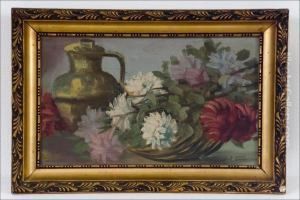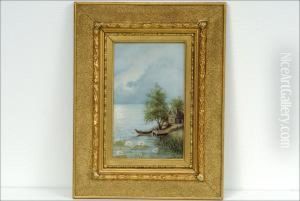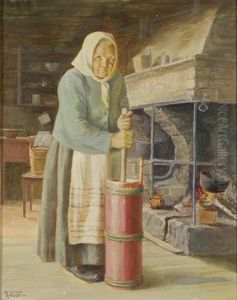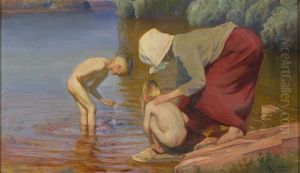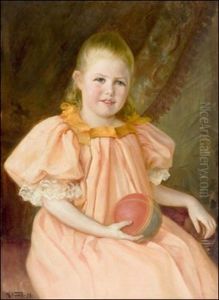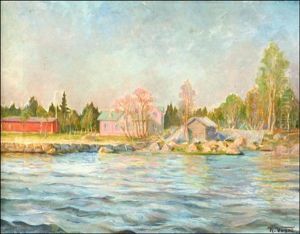Kaarlo Vuori Paintings
Kaarlo Vuori was a Finnish painter and graphic artist whose work contributed significantly to the art scene in Finland during the 20th century. Born on January 1, 1906, in Finland, Vuori's artistic journey began in an era marked by significant upheavals and transformations in Europe, which inevitably influenced his artistic direction and choice of subjects. Throughout his career, Vuori was known for his distinctive style that blended traditional Finnish themes with modernist elements, making his work resonate with both national and international audiences.
Vuori's education in art was comprehensive, studying at notable Finnish art institutions where he honed his skills in painting and graphic arts. His early works were characterized by a strong emphasis on Finnish landscapes and rural life, capturing the essence of Finland's natural beauty and the simplicity of its countryside. As his style evolved, Vuori began to experiment with more abstract forms and techniques, reflecting the broader movements in European art during the mid-20th century. Despite this evolution, his work always retained a sense of connection to Finnish cultural heritage and identity.
Throughout his career, Kaarlo Vuori participated in numerous exhibitions, both solo and group, establishing himself as a key figure in the Finnish art community. His contributions were not limited to his own artistic production; Vuori was also involved in various capacities in the art world, including teaching and participating in art organizations, which helped foster a vibrant artistic environment in Finland.
Vuori's art received recognition both in Finland and abroad, earning him awards and accolades that underscored his impact on the art world. His works are part of several public and private collections, testament to his enduring appeal and significance as an artist. Kaarlo Vuori passed away on December 7, 1985, leaving behind a legacy that continues to influence Finnish art. His dedication to exploring the nuances of Finnish culture and landscape through his art remains a cornerstone of his contribution to the world of art.
